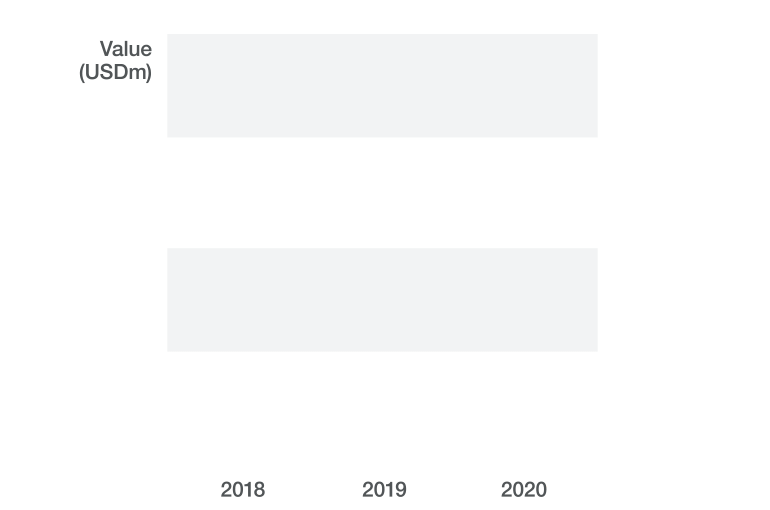Crisis speeds redefinition of infrastructure assets
Related people
Headlines in this article
Related news and insights
Publications: 21 March 2024
Publications: 21 March 2024
Publications: 21 March 2024
Publications: 21 March 2024
Reduction in energy and infrastructure activity since 2018 high

Deal value and volume both down
As in so many sectors, the onset of the Covid-19 pandemic had a sudden and profound impact on energy and infrastructure transactions.
While there was good activity at the start of the year, deal value and volume - down 26% and 14% respectively, in the year to date – rapidly fell off at the start of the second quarter.
For the most part, processes were being delayed rather than cancelled, although in the particularly hard-hit transport sector, we did see some deals abandoned.
An improving outlook
As the year has progressed, the situation has changed, and activity is once again picking up.
In some cases, there are new deals. Elsewhere we are seeing processes that were first mooted six to 12 months ago being re-launched, including the proposed sale by Macquarie Infrastructure and Real Assets (MIRA) of its portfolio of energy-from-waste sites in the UK to Orange on its fibre-to-the-home (FttH) business.
The outlook for the rest of the year and the first part of 2021 now looks promising across most asset classes, driven by a number of factors including:
- abundance of dry powder held by funds;
- broadening of the range of assets regarded as resilient and robust long-term targets for funds;
- green recovery and increased focus on energy transition; and
- acceleration in the redefining of assets seen as core (more digital infrastructure, fewer airports) and core-plus (to include greenfield or pre-operational investments, particularly in renewables).
Pressure to put capital to work
Infrastructure funds have in the last six or seven years raised a record amount of capital that now needs to be deployed.
With some funds now reaching maturity, the pressure is on them to dispose of assets and return cash to investors. Although the funds traditionally have a 10-year lifecycle and may be extended, there is an urgency to put their dry powder to work, and the recycling of capital in the sector is likely to continue to drive volumes.
Indeed, the Covid-19 crisis has, in some senses, accelerated this process. Markets are likely to remain uncertain for some time, but funds appear ready to kick-start the disposal process, focusing on selling much sought-after super-core assets in the first instance, while waiting to sell assets in less demand once market conditions improve further.
The recycling of super-core assets has meant that transmission and distribution networks and similar regulated or quasi-regulated assets continue to attract strong interest from a range of investors, including less well-established market participants.
For that reason, we expect the next few months to be busier than previously expected.
The rise and rise of digital infrastructure
One clear impact of the Covid-19 crisis has been around digital infrastructure assets.
Although many in the sector have seen these as increasingly important investment targets, others have been slower to include them in their portfolios.
The pandemic has changed that. With entire populations forced to work from home and a surge in the adoption of online shopping and banking, a combination of consumer demand and government policy means there is now no doubt that digital infrastructure assets will become increasingly attractive to traditional infrastructure investors.
Interest in backbone elements of the digital world is therefore growing fast, with investors circling around key assets including:
- fibre networks;
- data centres; and
- co-location enabled telecoms towers.
The process of redefining what constitutes a “good” infrastructure investment continues apace. Funds seek assets that can provide dependable and predictable long-term returns. “Resilience” (to the pandemic but also to the more foreseeable challenges of climate change, for example) is expected to become a critical investment criterion.
Renewable energy on the rise
Another sector that has remained vibrant – even during lockdown – is renewable energy.
Activity here is strong across the globe and with investment in onshore and offshore wind and solar energy projects in particular increasing, as traditional developers continue to deleverage balance sheets and recycle capital into new projects.
Recent examples include:
- the announcement that Total and Macquarie’s Green Investment Group (GIG) have established a partnership to develop 2300MW of floating offshore wind off the coast of South Korea; and
- the strong interest from investors in the German Borkum Riffgrund offshore wind developments (Rounds One and Two and the upcoming Round Three).
Auction processes continue to attract high levels of competition for renewable assets and businesses.
One driver for this activity is an increasing focus by funds on environmental, social and governance (ESG) issues.
They are under increasing pressure from investors to demonstrate that they are taking the ESG agenda seriously and playing their part in tackling long-term global challenges, not least climate change.
Transport assets hitting the buffers
Transport assets – in particular, airports – remain a far more troubled area, overshadowed by deep uncertainty. In fact, it could be argued that the Covid-19 crisis may change how airports are valued by investors for a long time.
No-one could have predicted a scenario whereby the footfall at major international hub airports such as Heathrow and Frankfurt would practically disappear, as it did at the height of the crisis. The vulnerability of smaller, regional airports is even greater.
Some contend that the airline industry and the airports they use will recover to pre-Covid-19 levels in two to three years, helped by a further push on increasing efficiency and cutting costs. However, that is far from certain.
In the meantime, many owners of smaller airports hoped that the easing of travel restrictions over the northern hemisphere during summer would allow them to bring in some much needed revenue. The often inconsistent imposition of government quarantine measures, however, meant that any relief from balance sheet pressure was short-lived and unpredictable.
Many airports have been able to agree waivers on their banking covenants, which should give them breathing space until the first half of next year. At that point, however, owners (and potentially creditors) may need to consider longer-term changes, including:
- injection of fresh equity;
- refinancing of existing loans; and
- capital restructuring to deleverage balance sheets.
There are likely to be some casualties.
Nevertheless, elsewhere in the sector, activity continues, for example, the sale of the Intercity Express Programme (IEP) East.
At a time when energy and infrastructure transactions look set to bounce back strongly, transport assets, airports in particular, are bound to face more challenges. It looks as if it may remain that way for some time.
Looking forward, activity in the sector is certain to diversify, with emphasis on what constitutes a core asset being transformed by the pandemic.

Download report
Read our latest report, Global M&A Insights: Recalibrating risk
Download PDF



